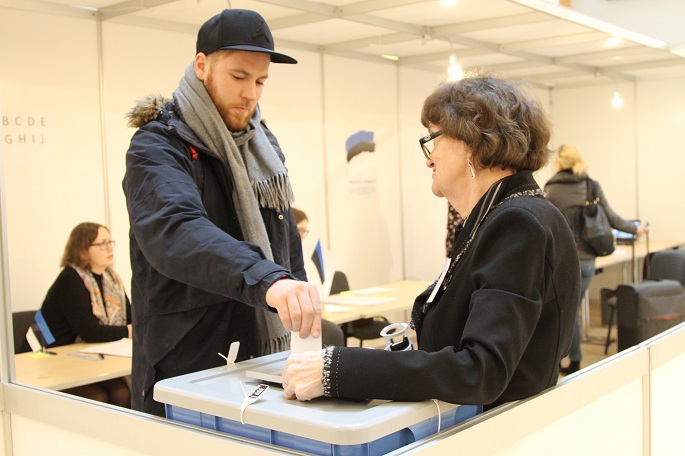Voting of Estonian parliamentary polls goes on smoothly
Published : 03 Mar 2019, 20:57
Updated : 04 Mar 2019, 01:02
Voting of Estonian parliamentary election at polling stations of local culture centers, schools, shopping centers and Tallinn city office went on smoothly on Sunday.
Working staff of the polling stations were seen checking the identity cards of the voters and guiding them to cast their ballots.
In an international visitors program organized by the State Electoral Office of Estonia, participants were taken to a culture center in Keila, a town and an urban municipality in northwest Estonia, and Paldiski, a town and Baltic Sea port about 45 km west to Tallinn, as well as Laulasmaa School and Muraste School in the small villages of Harju County, while another two separate trips went to Rakvere, 100 km southeast to Tallinn, and Haapsalu, about 101 km southwest to Tallinn.
Voters were required to write down the number of their preferred candidate or the name of the candidate on the paper ballot comprehensively, the working staff told Xinhua.
The 451 polling stations from 12 voting districts open from 9 a.m. (0700 GMT) till 8 p.m. local time (1800 GMT) Sunday for voters to cast ballots for their regional candidates from 1,099 candidates from 10 political parties and 15 independent candidates.
During the advance voting period from Feb. 21 to Feb. 27 in Estonia, a total of 247,232 voters chose internet voting, rising from just over 186,000 in the 2017 local elections, while advance overseas voting was held at Estonian foreign representations from Feb. 16 to Feb. 20, according to the State Electoral Office.
Out of the total 1.32 million Estonian population, altogether 958,571 people including 77,881 Estonian citizens living abroad can vote in the general election, the Estonian Ministry of the Interior confirmed.
The 13th Estonian parliament Riigikogu was elected in 2015, with Estonian Reform Party winning 27.7 percent votes, followed by Estonian Center Party's 24.8 percent. The turnout was 64.2 percent.
In November 2016, current Estonian Prime Minister Yuri Ratas took over from then prime minister Taavi Roivas from the Estonian Reform Party after the latter lost a confidence vote in parliament, forming a new coalition government.

